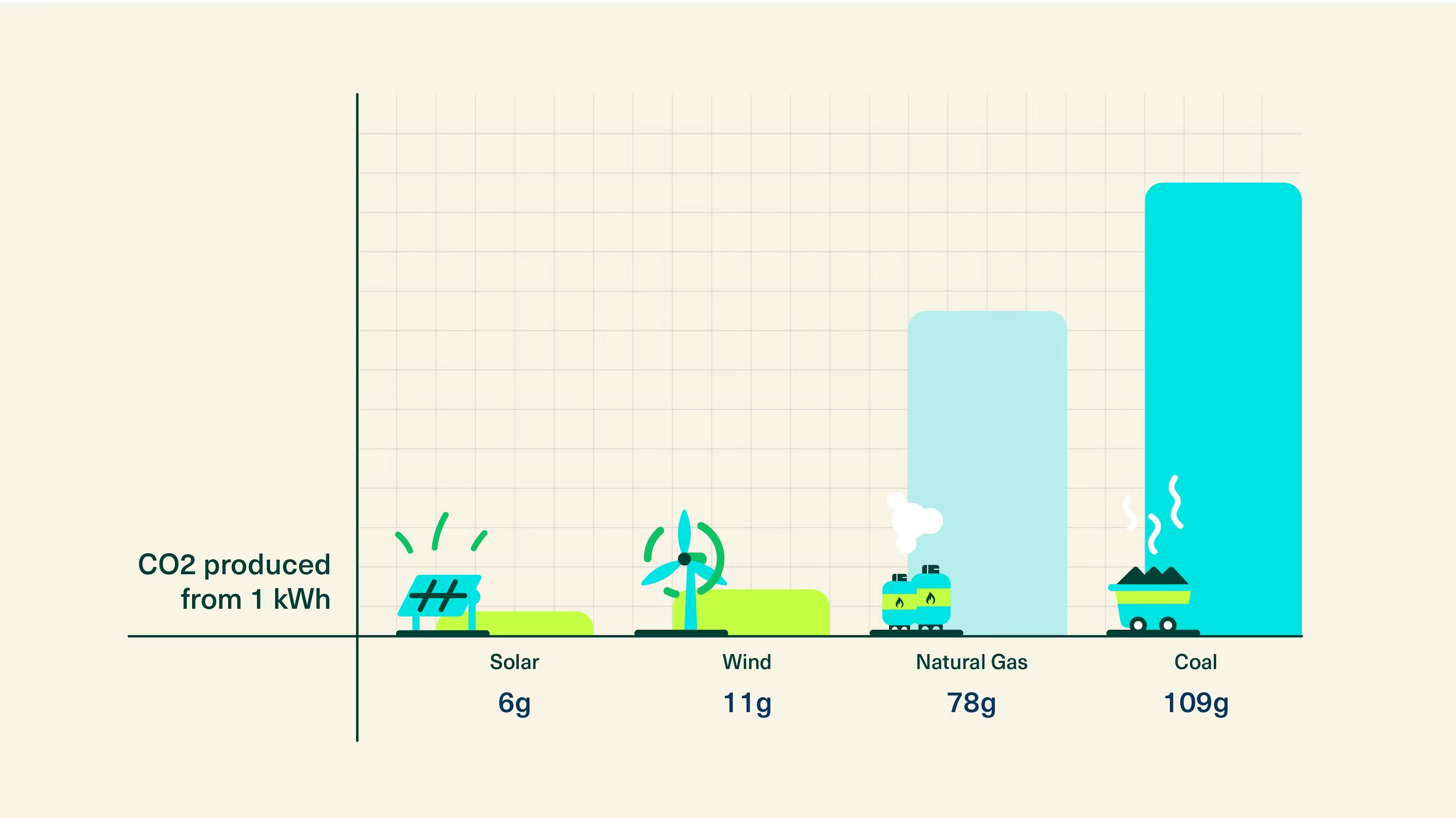The pros and cons of solar power

Solar power is not messing around. No other energy source has made the strides that solar has over the last decade. It’s gone from a niche to normal in just a matter of years, making steady gains in efficiency, affordability, and jobs contributions along the way.
Cons of solar power
Panels have environmental costs
Every solar panel is made up of smaller photovoltaic cells that catch atoms of heat and light from the sun and convert them into an electrical current. Those photovoltaic cells are 95% silicon, a mineral found in the earth’s crust. Silicon is a semiconductor, meaning it conducts electricity.
According to the Department of Energy (DOE), silicon is a high-efficiency, long-lasting, low-cost option for solar panel production. But it’s not without its costs. Silicon is abundant, but it doesn’t occur on its own — it’s usually linked with oxygen molecules to form silica and can take the form of sand, quartz, crystal, or flint. To isolate silicon, it has to be mined, then heated and stripped of its oxygen molecules to reduce it to a purer form, known as electronic-grade or solar-grade silicon. This is then sliced into pieces, which are used in solar panels.
The process of mining, heating and purifying, and then transporting silicon does have environmental costs; solar panels have carbon footprints, too. Today, silicon is most commonly produced in China, but is also produced in the eastern US.
It’s not as efficient a fuel source
One common critique of solar power is its viability: Will clean energy ever really be efficient enough to replace its dirty counterparts? Most estimates find that solar operates at an efficiency of around 20%, meaning that 20% of the light that hits a solar panel is converted into electricity. Fossil fuels like natural gas hover at an efficiency rate closer to 60%.
But proponents of solar argue that the internal efficiency of a panel doesn’t matter when the world’s supply of sunlight is unlimited. To make sure solar can feasibly power our economy, we need to scale up. Since there’s no limit on how much light the sun can produce, building infrastructure is the main way to accomplish this. Homeowners who want to power their lives entirely on solar may have to purchase a few more panels to live entirely carbon-free, but it’s doable.
Panels are a hefty up-front investment
The average six-kilowatt solar panel system costs between $13,000 and $20,000 to install, before tax deductions available through the federal tax incentive program. That’s a hefty up-front cost for many of us. While most estimates show that panels pay for themselves within six to eight years, this price tag is a large, very real barrier to access.
But the costs of solar energy are declining: They’ve dropped by 70% in the last decade. The $18,000 average price tag is down from $40,000 in 2010, according to the Solar Energy Industries Association, a drastic reduction — and a likely reflection of future price drops.
That doesn’t change the fact that only one-third of US households are even eligible for rooftop solar in the first place. Apart from the upfront cost, you have to own your home, have the right roof, and — unless you’re planning to pay cash upfront — have a high enough credit score to finance your panel installation. It’s just not an option for the majority of Americans. Fortunately, it doesn’t have to be. There’s another way: community solar. We’ll get into that more below.
Pros of solar power
Solar’s carbon footprint is still lower than that of fossil fuels — much, much lower
While it’s true that there is an environmental cost to producing solar panels, the carbon footprint of a solar panel is nothing compared to the carbon footprint of fossil fuels, which literally emit carbon dioxide and other greenhouse gases when they’re burned for fuel (as well as in the mining and refining processes).
That’s an important distinction between solar and fossil fuels. While the manufacturing process for both emits carbon, the emissions to produce a solar panel are still lower. A 2017 comparison of renewable and non-renewable energy sources found that a single kilowatt-hour of power produced by a solar panel emits six grams of carbon dioxide equivalent over the solar panel’s entire lifecycle, while coal and gas emit 109 and 78 grams of CO2 equivalent to produce the same amount of power. But emissions from fossil fuels take place across the entire lifecycle of the fuel source — mining, processing, and burning. Emissions from solar panels only take place during the manufacturing process.

It’s renewable
A different, and perhaps more productive, way to think about solar’s ability to replace fossil fuels is in terms of longevity. Solar power relies on a resource that is abundant and unlikely to ever run out: the sun. Unlike the world’s fossil fuels, which will one day reach an end, solar power is a resource we can depend on for at least several billion more years. It’s a cleaner, more sustainable solution for our energy needs than depending on finite stores of fossil fuels.
Community solar makes solar accessible to all
Tapping into solar power doesn’t require investing thousands up front. Through community solar programs, anyone who pays a power bill can get in on the benefits of solar. The term “community solar” refers to solar farms that serve multiple homes and businesses in their area. For no extra cost, you can repurpose part of your existing power bill to help keep the solar farm running. When the farm produces electricity, the clean energy flows into the power supply and you get credits back on your bill. So not only are you helping clean up your local power grid, but you’re also guaranteed to save a little money on your power bill every month. It’s a quick, easy way to cut down your carbon footprint without any of the financial hurdles or the hassle of rooftop installation.

Sign up for solar savings
Sign upSimilar articles

Whether you’re searching for a clean energy alternative or looking for ways to reduce your electric bill, you’ve probably thought about installing solar panels on your property. But do solar panels really save you money? And if so, how much? Is the upfront cost worth it?

In a matter of years, solar power has gone from a relatively obscure form of energy to one of the fastest-growing power sources in the world.

It’s official: renewable fuel sources have eclipsed fossil fuels when it comes to new energy-generation projects.